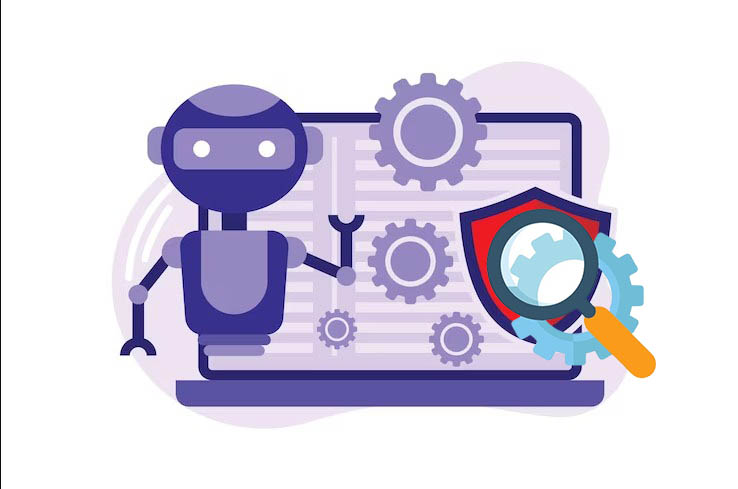Introduction
The landscape in the software testing world has gradually changed over the recent years. One such innovation that seems to hold court at this point is Cognitive Test Automation (CTA) developed on a platform of Natural Language Processing (NLP). Traditional test automation involves explicit scripting using programming languages, whereas Cognitive Test Automation Services makes this intuitive and intelligent to an extent that machines “understand” and “execute” test scripts in the most natural way possible, just like humans. The likely outcome of such a shift is an end-to-end revolution in the performance of software testing by QA teams in terms of efficiency, scalability, and accessibility.
In this article, we review how NLP disrupts test automation, benefits provided to workflows in software testing services, its key components, and practical examples of its application in test scripts. We will also discuss how cognitive capabilities baked into NLP are setting up the future for intelligent test automation.
What is Cognitive Test Automation (CTA)?
Definition and Overview
Cognitive test automation involves the use of AI technologies in making testing processes smarter, leveraging several technologies within various activities that are included in testing. Unlike traditional test automation, which would have a predefined script that gets executed based on rigid instructions, CTA encompasses machine learning and NLP to intelligently decide the approach for testing, adapt to the continuity of changing environments, and interact with applications in a more human-like manner.
The core of CTA, therefore, is the usage of NLP, hence the ability of systems to understand, process, and generate human language. It aids in automatically translating complex business requirements into test scripts and their dynamic adaptation to changes in the UI or functionality of an SUT.
Key Components of Cognitive Test Automation
- Natural Language Processing (NLP): The ability of a machine to understand, interpret, and generate human language is the bridge between the human input and the test automation action.
- Machine Learning: By employing ML algorithms, the system can learn from patterns in data, improve the accuracy in testing, and adapt to changing environments without explicit programming.
- Robotic Process Automation (RPA): Most of the time, it works along with NLP to perform repetitive tasks with the objective of enhancing the whole cognitive test automation process.
- Artificial Intelligence (AI): In this case, AI techniques provide the system with decision-making, prediction of probable outcomes, and insight into the test about quality that is to be achieved regarding the software under test.
Together, these elements will make a solid framework for performing complex tests in a much more efficient and flexible manner.
How NLP Is Revolutionizing Test Scripts
- Automation of Test Script Generation
Historically, much effort and experience were needed to develop and maintain test scripts, often including some sort of programming. NLP makes this easier by allowing testers to create test scenarios in a natural language. The textual instructions are then allowed to be transformed into executable test scripts in any desired programming language that the NLP-driven automation system considers appropriate.
For example, the QA engineer can write input like:
“Verify that the login page is accessible with valid credentials.”
This text is read by the NLP engine and automatically creates the test script to test that condition in the login page of your application.
This capability of test script generation directly from the natural language statements reduces the effort and time required for manual scripting by great measures. This also reduces the possibility of human errors since the scripts can be adapted by the system based on business logic and context.
- Context-Aware Test Coverage Improvement
Traditional test automation scripts are written with a certain predefined approach. This may vary the test coverage. NLP-driven test automation can enable tests to be context sensitive to changes in UIs, business requirements, and functionality.
Such an NLP-based system may identify whether the button label has changed or the field now needs different input types. It would automatically update the test script or generate new test cases, without any need for human intervention.
This will not only help improve the coverage of testing but also enhance the agility of test teams towards the changes being brought about and ensure increased accuracy in the validation of the system.
- Reducing the Need for Extensive Programming Skills
One of the major pains in traditional test automation is that it needs a tester who is a strong programmer. Of late, low-code or no-code automation platforms have resurfaced, but even those run on predefined workflows and are not cognitive in their flexibility, like NLP.
In this way, test automation with NLP allows testers to interface with the system much more intuitively than hitherto, by defining test cases in natural language rather than having to write complex code. The barrier to entry is thus lower, allowing testers without programming expertise-or with very little-to actively contribute to test automation efforts.
For example, a non-technical tester could enter the following phrase:
“Test if the user is redirected to the homepage after logging out.”
This would then be used by the NLP engine to construct an executable script from such input, without requiring deep coding knowledge, hence making automation possible for more people.
- Nonstop Test Adaptation with NLP
In dynamic environments where the software constantly goes through changes, such as agile development or CI, test scripts can become obsolete relatively fast. This is where continuous automated tests using NLP come in.
It can detect new or changed UI elements, updated workflows, changes in business logic, and can even generate new test cases based on the evolving requirements. This self-adapting capability reduces the maintenance burden on testing teams and ensures automation keeps pace with the product’s development life cycle.
A system for test automation with NLP would, therefore, be able to detect such a change-for example, if an application introduces any new feature or updates an existing one-and update the test scripts, thus ensuring continuous test coverage with no manual intervention.
- Natural Language Understanding for Generating Test Data
Another very relevant activity for testing, which can be automated, is test data generation. NLP will generate natural and understandable test data upon receiving raw inputs in the form of natural language. Now, test cases need only describe, for instance, “Create test data for 1000 users, including both male and female, aged between 18 and 65.” And the system will generate such datasets.
It was further believed that this capability reduces the complexity of creating large volumes of test data and ensures that the data produced is aligned with business rules and requirements.
- Integration with Other AI-Powered Tools
Further enhancement of the capability involves integration with the other AI-powered tools within the automation ecosystem. For example, when integrating into AI-based visual testing tools, it identifies changes in UI by analyzing textual content, user flows among other visual elements that check that the application behaves as expected across devices with different dimensions of their screens.
NLP can also work in tandem with other cognitive tools of anomaly detection, the prediction of failures based on past patterns, and analytics of data in real-time.
- Improving Team-to-Team Collaboration
Cognitive Test Automation also allows much closer collaboration across the development, testing, and business teams. With automation scripts now written in natural language, communication was easier and more transparent across teams. Nontechnical stakeholders can finally review and approve the test cases, making it more easily aligned to testing for business goals or user expectations. The close collaboration improves the continuous integration of all software lifecycle, which helps in developing, testing, or releasing the software to meet the needs of the end-user.
Benefits of NLP in Cognitive Test Automation
- Faster Time to Market: NLP helps the companies save time wasted in manual testing by automating the generation and execution of test scripts. This, in turn, can equate to faster releases and quicker market feedback.
- Increased Test Coverage: Automation using NLP means making intelligent decisions under ever-changing conditions has become possible, which will extend testing across a wide range of platforms, devices, and workflows.
- Lower Costs: As the need for claiming a lot of script writing is reduced by NLP, testing costs go down. Additionally, NLP reduces the dependency on skilled programming professionals to a large degree or makes automation more accessible.
- Improved Accuracy: Automation of adaptation according to changes, production inclusively accurate test scripts are made possible by the NLP-driven systems.
- Adaptability to Changing Requirements: NLP-driven test automation systems can respond dynamically to changes in user interfaces, evolving requirements, and modifications to the environment in which the software exists.
- Better Collaboration: Integrated NLP thus allows business teams, developers, and testers to communicate better; this means testing in keeping with business goals.
Challenges and Considerations
While there is huge potential in NLP, its applicability for test automation does come with some challenges:
- NLP Model Complexity: While modern NLP models are powerful in their own right, they may still struggle with very technical language, domain-specific terminologies, or sets of ambiguous instructions.
- Training and Fine-tuning: Most of the automation test tools, powered by NLP, need correct training regarding proper terms and requirements specific for their domain and, thus require huge initial effort.
- Integration with Existing Tools: Whatever NLPA-based automation on any of the legacy systems or even the existing test tools would require monumental refactoring.
Conclusion
CTA shall change the way software testing has been performed with NLP. By making test script generation effortless, improving test coverage, and facilitating better collaboration, NLP performs software testing tasks more easily, quickly, and effectively.
With each passing day, AI and machine learning continue to improve and feature in the making of intelligent and adaptive test automation. Moreover, this will make companies that adopt NLP-based automated test solutions better positioned to handle increased intricacies brought about by modern software development and deliver quality products faster.
FAQs
- What is Cognitive Test Automation?
Cognitive Test Automation is an advanced approach to infrastructural software testing processes by AI technologies like NLP and ML, which empower them to adapt, learn, and operate in an intelligent way.
- How does NLP help while one automates test scripts?
One of the most important features of NLP is that it allows testers to write test scripts in natural language. Subsequently, the system itself translates human-readable directions into a type that can be executed by the computer, thereby reducing much of the manual work and technical expertise.
- Does NLP enable non-technical users themselves to generate automated test scripts?
Yes, NLP-driven test automation allows non-technical testers to perform test automation by creating and maintaining automated test scripts in natural language, without knowledge of programming.
- What are the major benefits of NLP in test automation?
Key benefits include quicker development of test scripts, high test coverage, reduced costs, improved accuracy, and robust team collaboration.
- Are there complications that might develop with the use of NLP in test automation?
Yes, challenges include the complexity of the training of NLP models and interpreting specialist terminologies, especially when integrated with other automation systems.
- How does NLP improve collaboration within the testing teams?
NLP enables developers, testers, and business stakeholders to have effective communication by enabling test case definitions in natural language; hence, it has become easy on all of them to review and approve the tests.



